Decorating for Fun
IT IS IMPORTANT TO PRESENT AN ATTRACTIVE PLATE, but this should never be done at the expense of taste. I do not fuss much with presentation; I like my food still hot and not handled too much, so it looks natural. Shorey loves to decorate a plate, and showing her a few garnishing techniques made us both happy.
Some of the garnishes, like the olive or grape “rabbit,” can be mastered instantly, while others, like the tomato rose, take practice. Seeing these techniques in a video is the best way to learn them.
To see how it’s done, go to www.surlatable.com/jacquespepin.

OLIVE OR GRAPE RABBIT: Cut a lengthwise slice from one side of an olive or grape and carve a small triangle out of the slice. Place the olive or grape cut side down and make an incision halfway down at the pointed end. Insert the triangle so the pointed “ears” stand up.
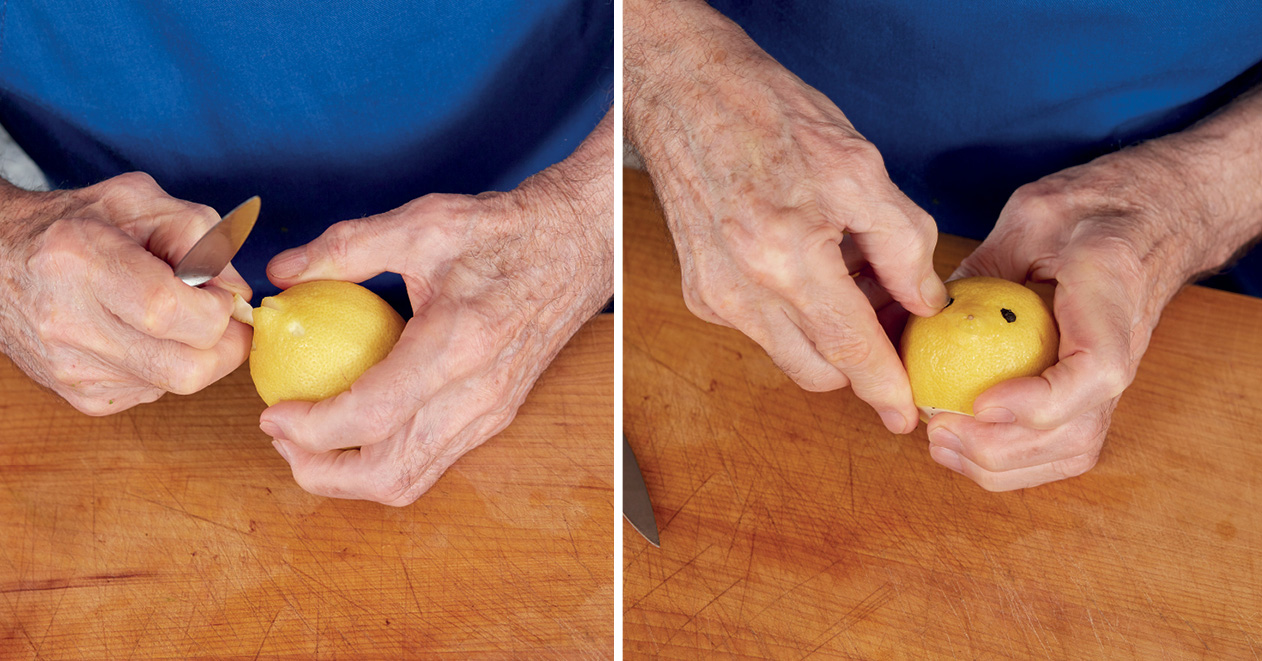

LEMON PIG: For a lemon pig, choose a lemon with a pointed “nose.” Cut a little wedge from the nose to create a tongue. Cut ears on each side of the lemon. Make a hole on each side of the nose and insert 2 black peppercorns for the eyes.


Lion-teeth lemon half: Cut off both ends of a lemon. With a paring knife, deeply cut “lion teeth,” or a zigzag, all around the lemon and separate the halves.
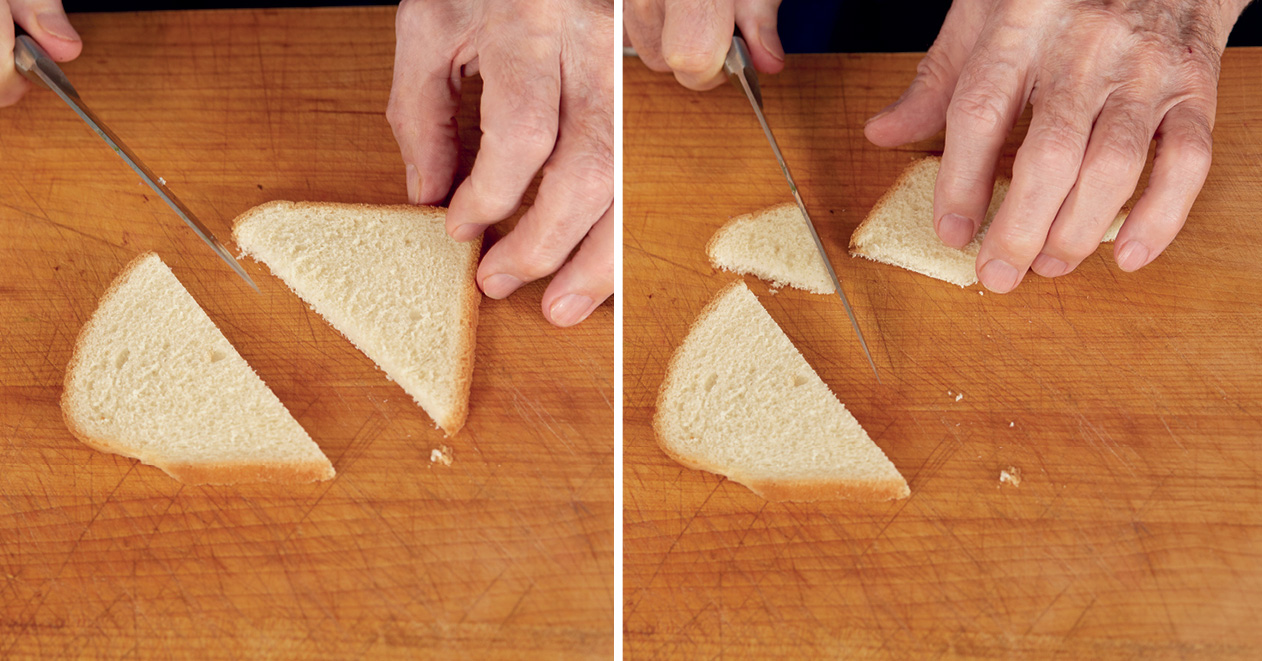

Heart-shaped croutons: Trim a slice of white bread and cut in half diagonally. Cut each end to get a more pointed triangle, then trim each piece into the shape of a heart. The croutons can be fried in oil or butter or baked. For the presentation, dip the tip of each crouton into the sauce they will be served with or into melted butter and then into chopped parsley.

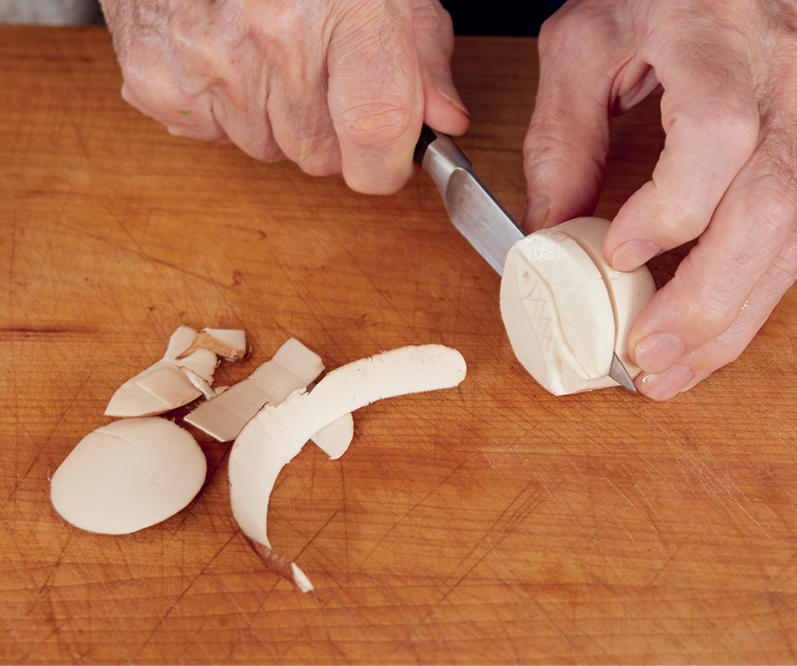
Mushroom fish: Slice off the rounded top of a large firm button mushroom. With the point of a paring knife, draw the shape of a fish about ¼ inch deep on the flat of the mushroom. Cut away the flesh around the outline so the fish stands out in relief. Mark the head, eyes, and scales with the point of the knife. Trim the mushroom all around, then cut a slice off the top of the mushroom with the fish relief. Sprinkle it with lemon juice to prevent discoloration.



Tomato rose: Remove the skin from a tomato in a long strip that can be turned into a rose; the sliced tomato can then be decorated with the “rose” for a salad. Beginning at the top of the tomato, cut away a slice, without separating it from the tomato, and then continue cutting a narrow strip, working your way around the tomato and using your knife in a jigsaw fashion to give a nice edge to the strip; it should be about 10 inches long. Cut another strip of about the same width and length. Curl the first strip on top of the tomato, which becomes the base of the rose. Roll the second strip into a tight scroll and place it in the middle to make the heart of the rose.
To serve in salad, slice the tomato into ½-inch slices. Arrange on a plate and sprinkle with salt, pepper, and a generous amount of extra-virgin olive oil. Decorate with the “rose” and serve.
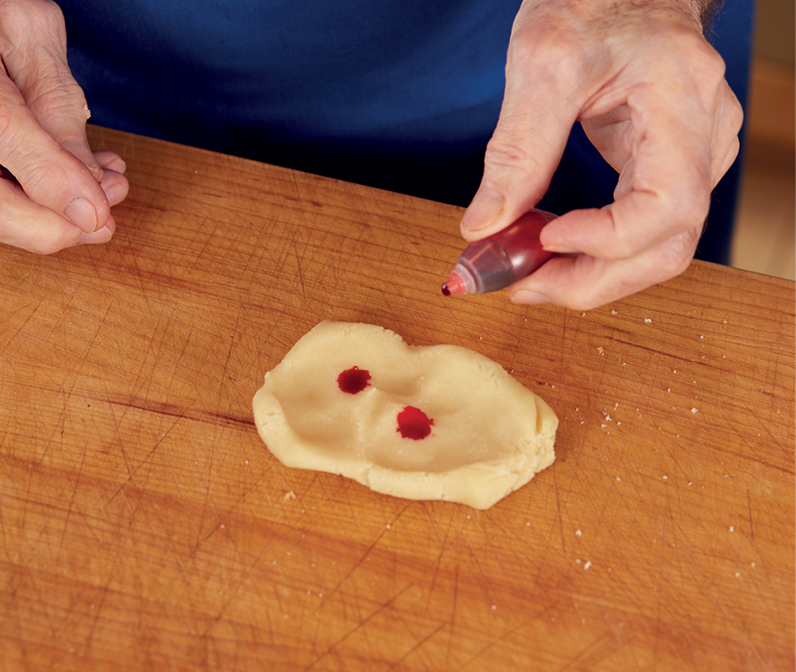

Almond paste carnations: Mix ½ cup almond paste (found in most supermarkets, and also known as marzipan) with a few drops of red food color for the carnations, and ¼ cup almond paste with a little green food color for the leaves. For the carnation, roll the paste into a long, thin rope about ¼ inch thick and 12 inches long. Press one edge of the rope with a spatula to make it thinner. Using a fork, make ridges on the thinner side of the strip, then slide a thin knife underneath to loosen it. Fold the strip over itself in a wave-like pattern. Holding the carnation by the bottom, squeeze firmly to open the carnation into a beautiful flower. Roll out the green paste and make a couple of lozenges or triangle-shaped leaves. Mark veins in the leaves with your knife. Place the leaves around the flowers.




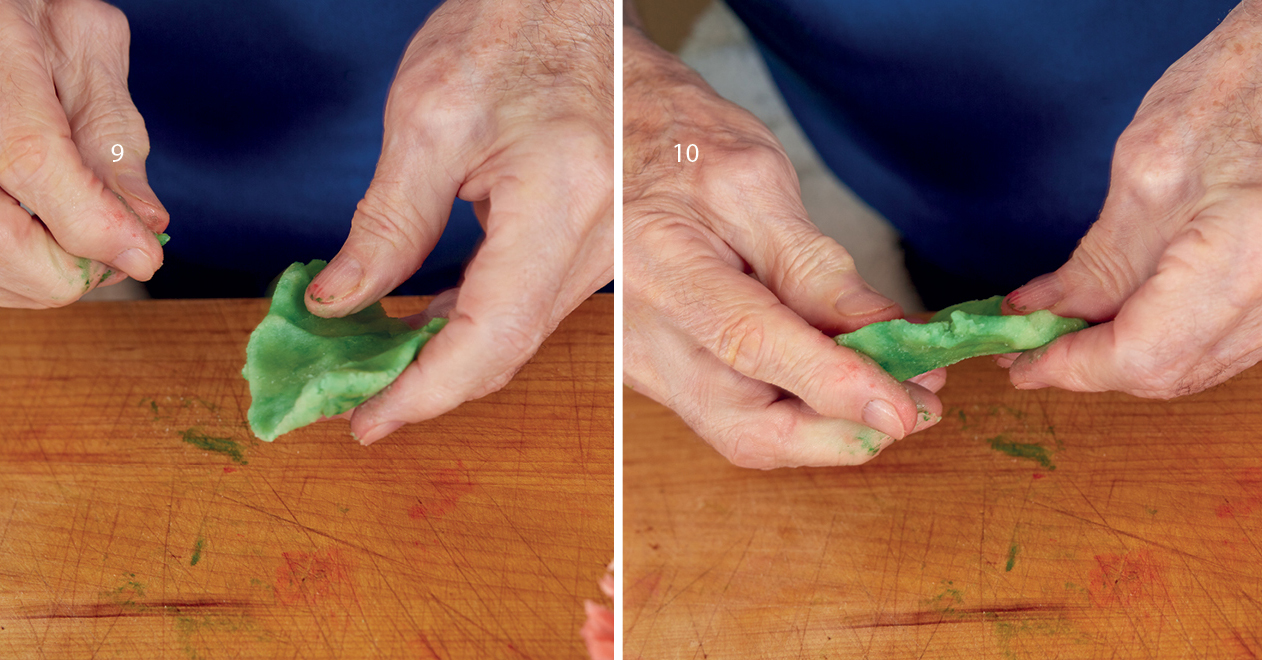
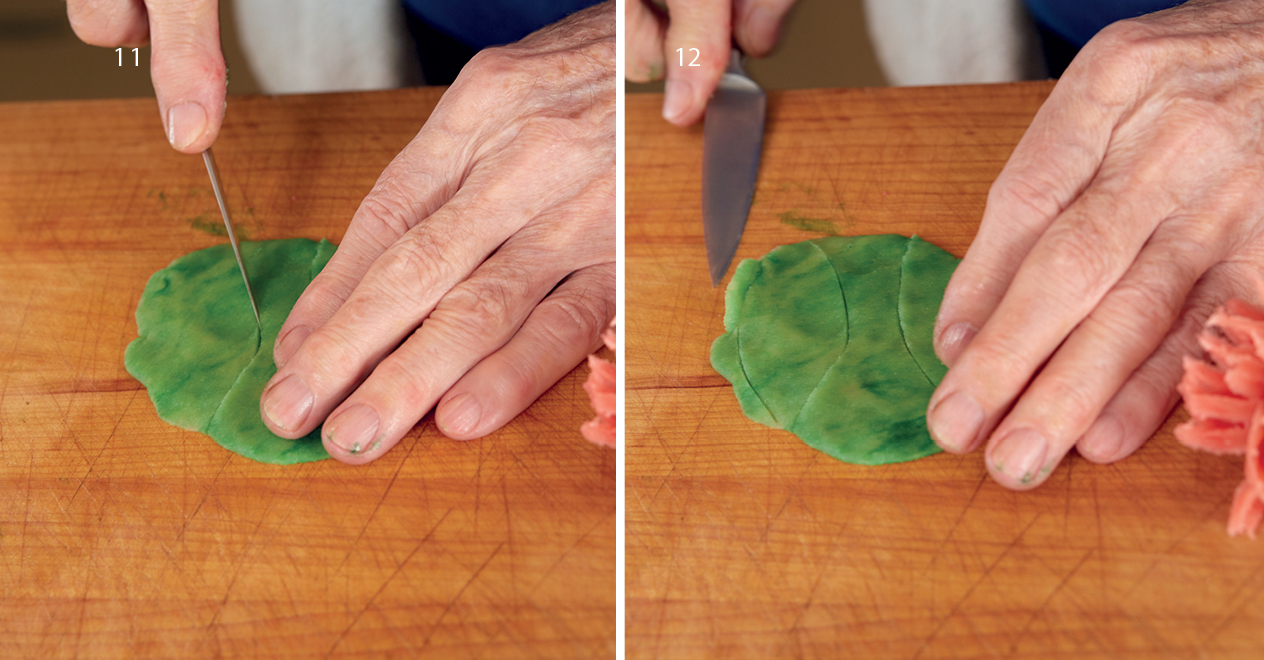

Almond paste rose: Shape a small piece of the almond paste into a cone to make the heart of the rose. Flatten one edge of another piece of almond paste with the tip of your finger or a spatula. Lift it and roll it around the cone. Roll another almond paste piece flat to make another petal and roll it around the flower bud. Keep adding petals to build the rose, turning the petal edges outward, until the rose is finished.